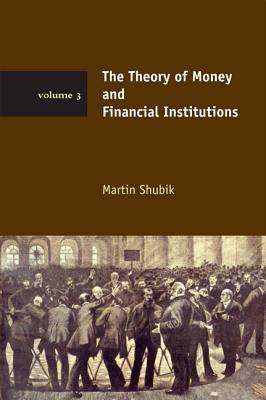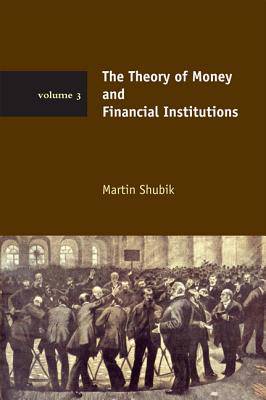
- Afhalen na 1 uur in een winkel met voorraad
- Gratis thuislevering in België vanaf € 30
- Ruim aanbod met 7 miljoen producten
- Afhalen na 1 uur in een winkel met voorraad
- Gratis thuislevering in België vanaf € 30
- Ruim aanbod met 7 miljoen producten
Omschrijving
The third and last volume of a work aimed at providing the theoretical underpinnings for an economic dynamics.
This is the third and last volume of Martin Shubik's exposition of his vision of "mathematical institutional economics"--a term he coined in 1959 to describe the theoretical underpinnings needed for the construction of an economic dynamics. The goal is to develop a process-oriented theory of money and financial institutions that reconciles micro- and macroeconomics, using strategic market games and other game-theoretic methods.
There is as yet no general dynamic counterpart to the elegant and mathematically well-developed static theory of general equilibrium. Shubik's paradigm serves as an intermediate step between general equilibrium and full dynamics. General equilibrium provides valuable insights on relationships in a closed, friction-free economic structure. Shubik aims to open up this limited structure to the rich environment of sociopolitical economy without dispensing with conceptual continuity.
Volume 3 considers the specific roles of financial institutions and government, aiming to provide the link between the abstract study of invariant economic and financial functions and the ever-changing institutions that provide these functions. The concept of minimal financial institutions is stressed as a means to connect function with form in a parsimonious manner.
Specificaties
Betrokkenen
- Auteur(s):
- Uitgeverij:
Inhoud
- Aantal bladzijden:
- 668
- Taal:
- Engels
- Reeks:
- Reeksnummer:
- nr. 3
Eigenschappen
- Productcode (EAN):
- 9780262518031
- Verschijningsdatum:
- 24/08/2012
- Uitvoering:
- Paperback
- Formaat:
- Trade paperback (VS)
- Afmetingen:
- 145 mm x 221 mm
- Gewicht:
- 857 g

Alleen bij Standaard Boekhandel
Beoordelingen
We publiceren alleen reviews die voldoen aan de voorwaarden voor reviews. Bekijk onze voorwaarden voor reviews.











